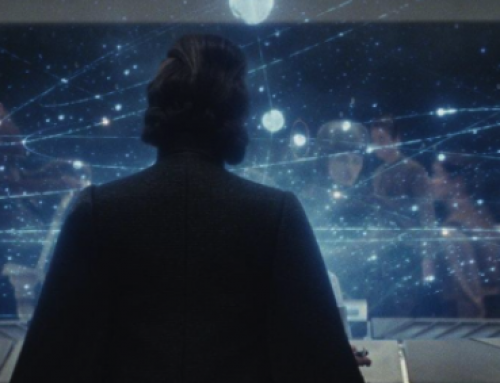This image is referred to as the “Hubble Deep Field” and it is the single most astonishing picture ever taken. It is the product of Hubble astronomers’ dumb luck as they whimsically aimed the Hubble Telescope at what they thought was an empty space in the sky. But instead of darkness they found galaxies; billions and billions of hidden galaxies, ghosts caught on film.
Patiently, the Hubble Telescope steadily aimed at this dark spot and exposed over 300 images for 10 days. When the images were merged into one, the black spot was revealed to not be black at all, but instead it was aglow with the light of over 3,000 galaxies. Except for 3 foreground stars from our Milky Way, each speck of light in this image is a galaxy consisting of billions of stars.
This was one black spot in the sky. It is now a reminder of the enormity of our universe, but even with these reminders, we still are unable to truly grasp the scales of our universe.
You can try to put a number behind it.
Scientists estimate that there are around 200 billion galaxies in the universe and that each one has around 200 billion stars. That is 200 billion billion stars! But these numbers are too large for us to grasp.
You can try to use analogies.
If the entire universe was shrunk down to the size of the Earth, then the Earth would be just 180th the size of an atom! But the unfamiliarly small size of the atom leaves us still scratching our heads to understand just how big the universe is in reality.
There seems to be a problem…
This problem obscures the understanding of countless scientific theories and wages war on the truth behind our world. It is a problem of size, time, dimension, effect, and perspective, but most of all, it is a problem of scale. Humanity is adapted for the scales that directly affect our daily lives. We are all medium sized, medium duration creatures familiar with medium sized, medium duration interactions.
Even as man stares at the sky, the constantly changing and fluid clouds can be misconstrued as steadfast fixtures in the sky. How much more misunderstood are the scales of the universe?
This problem causes people to ask why we don’t see animals still evolving (they still are on the scale of millions of years), why we haven’t discovered alien life yet (this is comparable to scooping a cup of water out of the ocean and concluding that there are no fish in our oceans), and even why should we be concerned about the building effects of pollution and carbon emissions.
Perhaps, all man can do to begin to comprehend these scales is admit that they are incomprehensible. And as an adaption to these new scales, man can simply tread humbly in their waters.







A couple things. I love what you are doing here. I just stumbled onto this site, and there is a lot of good information here. But you have to be careful to know the facts before you try to make others aware (and to use proper grammar so no one questions your credibility. Plus, you’re a writer, and proper grammar should be second nature). It sounds nit-picky, but you are supposed to use the word ‘an’ before every word that has a vowel sound at the beginning (or starts with a vowel). You didn’t do it in this one, but you did in two other articles. That’s how I realized I was reading the same author at first. One of my favorite astronomers, Dr. Pamela Gay, has a problem with Subject/Verb agreement sometimes, and it drives me crazy! Haha
But more importantly, the universe has an estimated 200 BILLION galaxies, each harnessing 200 BILLION stars each. Not just millions. Yeah crazy big, right?!?
Thank you for this website, I am going to spend a lot of time in here, I think.
Thanks for your help Justin! I’ll make sure to make those corrections.
Fixed. Glad to hear you are enjoying the site!